If you are planning to get to the FIFA World Cup, hurry up to buy a monocular with a phone holder in order to see in detail everything that will happen on the field.
CONTENT
- 1 What is a monocular and where is it used
- 2 Advantages and disadvantages of monoculars
- 3 Which is better: binoculars, a monocular, or a telescope
- 4 How the monocular works and functions and its main characteristics
- 5 Passive and active (night vision) types of monoculars with high magnification
- 6 Characteristics and technical features of monoculars with high variable magnification
- 7 Leading brands of monoculars of Russian and foreign production
- 8 Popular models of the most powerful premium monoculars
- 9 Popular models of monoculars with high magnification in the middle price category
- 10 How to choose a high magnification monocular for hunting and fishing
What is a monocular and where is it used
As soon as high-quality optics appeared in service with mankind, designers all over the world strove to create powerful, but at the same time mobile and compact optics. As a result, monoculars appeared.
Outwardly, the device really resembles binoculars with the difference that you can look through it with only one eye. The technical gadget combines modest dimensions, while boasting serious optics with a good field of view. The magnification factor for different devices varies from 4 to 18 times, there are models with several lenses, in which this figure reaches 25.
Monoculars are used where clear coordination of actions at a great distance is required, for covert surveillance, during the hunt, when it is necessary to trace exactly where the shot by you fell game. When fishing, the device will help coordinate actions when collecting and laying out nets over a long distance. Needless to say, monoculars are used by military and private detectives. Devices with a night vision function are especially popular with special services.
The monocular is used in golf, bullet shooting, archery. Where it is necessary to see something at a great distance. Very often, with a monocular, you can also see walking tourists, studying the world's famous buildings and structures in great detail, especially those that are fenced off. Watchmakers and jewelers love this tool, as additional lenses make it easy to turn a magnifying device into a telescopic magnifier.
Advantages and disadvantages of monoculars
The monocular is a truly versatile device. For the military, it can replace a telescopic sight, travelers will surely love its ability to transform into a handy gadget for attaching to a helmet along with a go pro camera. The monocular is more compact than any other optical device of this type, it can easily fit into a small purse or jacket pocket. It is lighter than the binoculars we are used to and much stronger. Many models are equipped with a special moisture-resistant and shock-resistant coating.
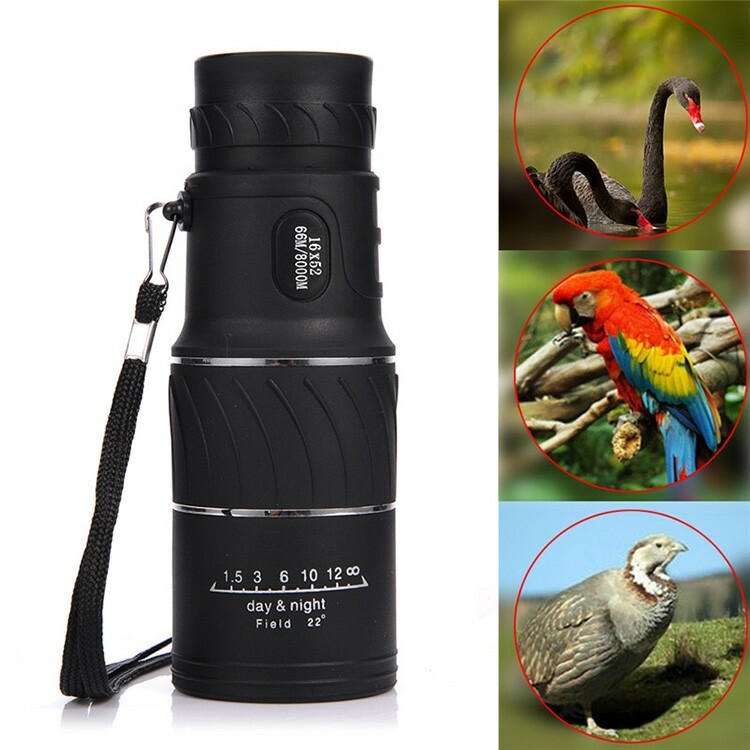
An important advantage of this device is its price. Instead of one binoculars, you can purchase two good quality monoculars, which will have different purposes. Among the minuses, perhaps, one can single out only a congenital defect - monocularity, you will not be able to observe for too long. But this did not lose the device at all.
Which is better: binoculars, a monocular, or a telescope
Choosing optics, each of us will look for something different. Convenience is important to one, compactness to another, multiplicity to the third. Let's consider the main advantages and disadvantages of each type of optics we have listed.
| Optics type | Advantages | Flaws |
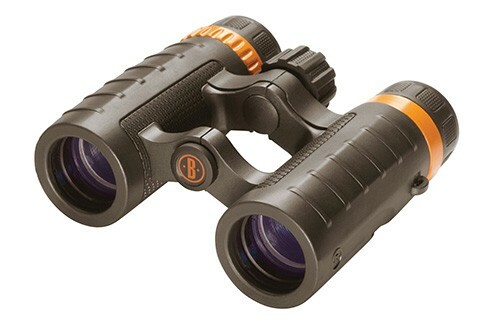 | Ease of use, no need to squint and strain your eyes. Good viewing angle. Additional options: compass, rangefinder, etc. | High price, considerable dimensions, additional weight. |
 | Large multiplicity with a modest weight. | Small angle of view, bulky. |
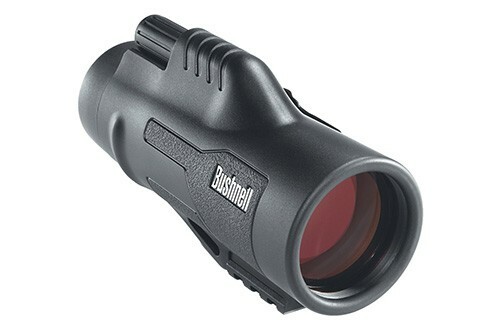 | Compactness, high magnification, the presence of additional "chips": the possibility of night vision, anti-vandal and moisture-resistant coating, night vision based on infrared illumination, there is a mount for a tripod and a head helmet, some models are equipped with additional optics, others have double lenses, which allows you to change the magnification as necessity. | More weight than a spotting scope, less comfort for long-term observation than binoculars. |
After studying the table, we can draw the following conclusion: if the price of the device does not play a decisive role for you, but a wide viewing angle is important to you, then it is better to purchase binoculars. Otherwise, a monocular is more suitable, which will provide the same magnification, but it will be cheaper and more compact.
How the monocular works and functions and its main characteristics
Before proceeding to the description of specific manufacturers and models, it will be useful to dwell on the device design in detail.

Consider the lens design (pictured above). The lens (1) is housed in a tube (2) connected to the body (4). In the housing, which is closed by covers, (3,6) there is a prism of the turning system (5). A tube (7) is rigidly connected to the body (4), along which the sleeve (11) of the eyepiece (8) rotates on the thread. Rotation of the sleeve (11) leads to an axial movement of the eyepiece (8), which is necessary for focusing the monocular to the sharpness of the image. A diopter scale 12 is applied to the coupling (11), and a fixed mark (13) corresponding to this scale is on the tube (7). An elastic or rigid eyecup (10) is installed on the sleeve. The eyelet (14) is used to attach a flexible strap handle used to carry the monocular. Moreover, monoculars suggest two types of prisms in the case:
- Sequential arrangement on one axis: ROOF. This technique is more compact.
- Location on different axes - PORRO.
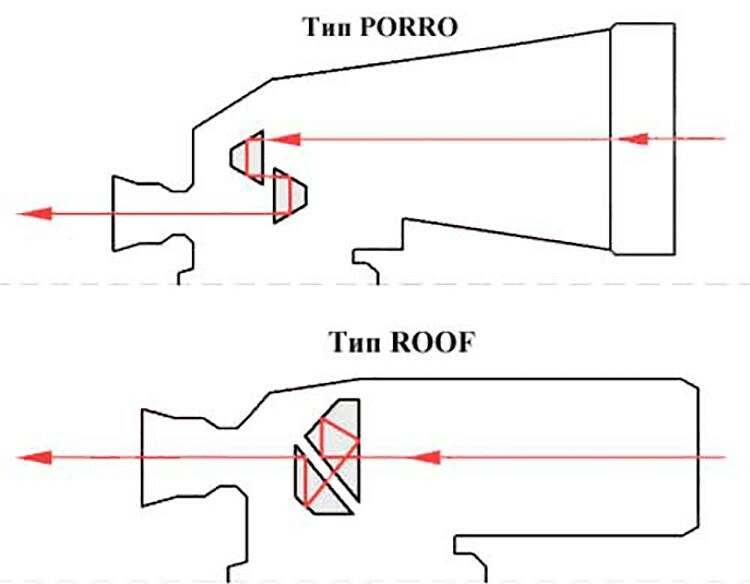
Let's briefly describe the features of these two prism stacking systems:
- PORRO - the simplest type of lens stacking. It is named after its creator Ignacio Porro. In this design, the axis of the objectives is on a different line from the axis of the eyepieces. The distance between the lenses creates the necessary volume of the image due to the phenomenon of total internal reflection. In such a system, the loss of light after passing through the prisms is zero. However, this design is much wider than in the ROOF system;
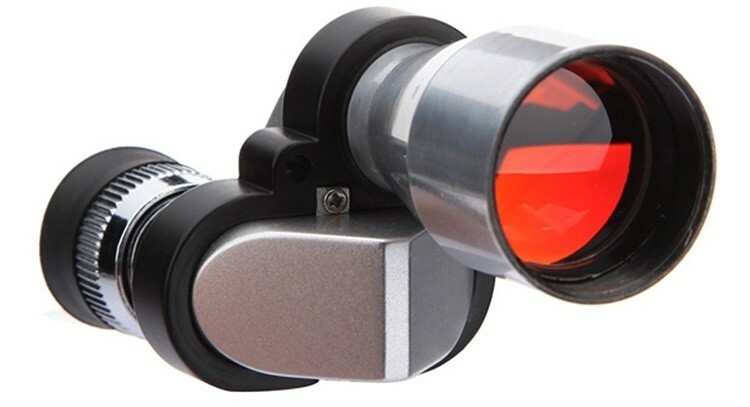
Prismatic monocular with PORRO lens - in system ROOF both the objective and the prisms in the eyepiece are aligned. In this case, the beam of light is first split into two, and then folded back into one. To reduce the loss of image quality due to image displacement, these monoculars use higher quality lenses, which is reflected in the cost of such equipment.
FOR YOUR INFORMATION!
Some monoculars allow changing lenses. The set of such devices includes several lenses with corresponding tubes.
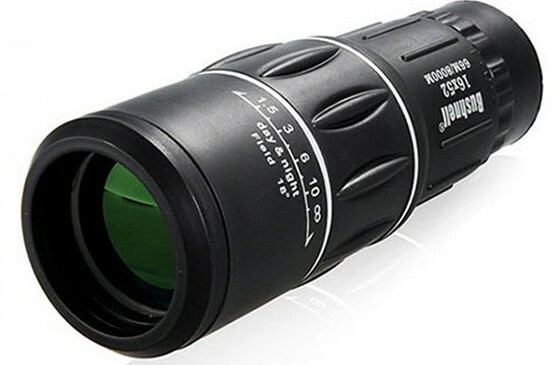
For a monocular, the same characteristics are relevant as for telescopes, telescopes, and even microscopes. Aperture is the diameter of the objective. The aperture ratio and angle of view of the device depend on this. Measured in millimeters.
FOR YOUR INFORMATION!
The presence of anti-reflective coating on the lenses significantly improves the image quality. There are four lens coverage grades: Coated ©, Fully Coated (FC), Multicoated (MC), Fully Multicoated (FMC) - (from worst to best).
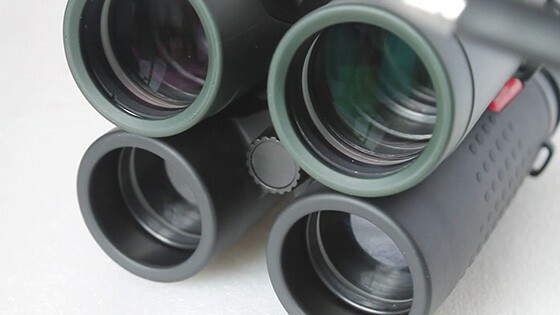
Focal length is a parameter that determines the magnifying ability of the device. Also measured in millimeters.
INTERESTING FACT!
To prevent the lenses from fogging up, the space between them is filled with colorless nitrogen or argon. This does not distort the picture. But the appearance of droplets of moisture on the lenses is excluded. As with any binoculars, a monocular allows you to adjust the device to your own vision.
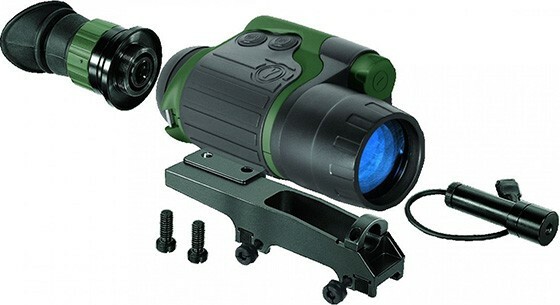
Often, instead of the focal length, the manufacturer indicates the multiplicity of the device. The concept of "times" is not a unit of measurement, but serves as an indicator of the degree of magnification. But do not forget that the higher the multiplicity, the stronger the device jitter will be. Usually, two numbers are indicated on the body of a monocular: the first is the lens diameter, the second is the multiplicity of the device.
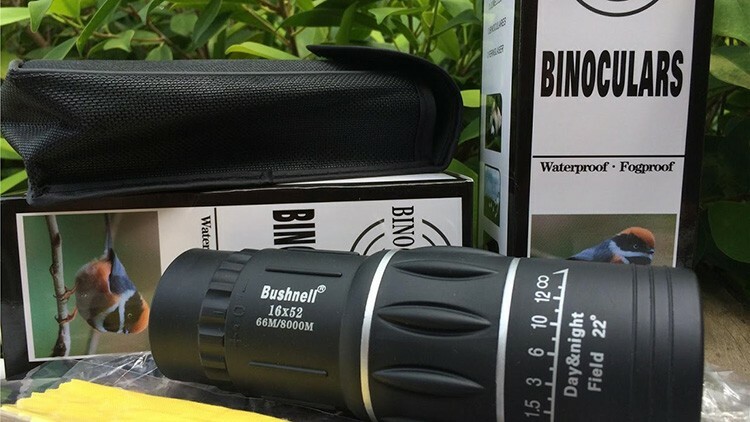
Passive and active (night vision) types of monoculars with high magnification
Passive devices are exclusively optical monoculars that operate only in the visible range of the spectrum, roughly speaking, from dawn to dusk. Active devices are equipped with an infrared sensor, therefore, in fact, they are night vision devices. Such devices are a topic for another conversation. Monoculars of this type are most often used by the military, and such tracking systems are not available to the common man in the street. The efficiency of such devices is influenced by the generation of the image intensifier.
On the market, we can buy simplified samples that work with a special infrared illumination. At the same time, night monoculars can often serve well during the day when using a diaphragm.
Characteristics and technical features of monoculars with high variable magnification
Monoculars with variable magnification are modern devices with the possibility of magnification from 10x to 30x. Roughly speaking, these are zoom monoculars that allow you to view landscapes or architectural structures in great detail at a great distance.
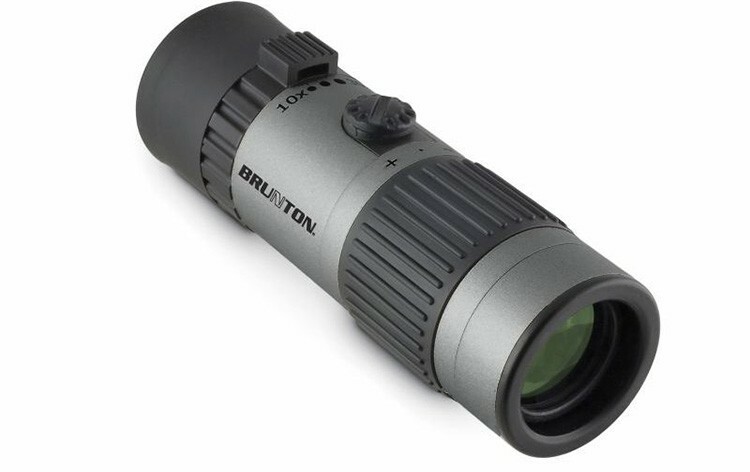
The multiplicity adjustment is carried out using a movable lens mechanism. These monoculars with zoom provide high quality images on a clear and sunny day. However, they are not suitable for evening observation due to the low level of aperture ratio. When choosing a monocular with variable magnification, do not skimp on choosing a model with quality lenses. After all, it depends on them how clear the image will be.
Leading brands of monoculars of Russian and foreign production
There are about 10 large companies on the Russian market that offer proven optics with a diverse set of characteristics and functions. Let's consider the most popular ones. Among the Russian manufacturers of monoculars, there are two in the top leaders:
- Kazan Optical and Mechanical Plant (KOMZ). The company produced the first binoculars from the factory assembly line back in 1940. At the moment, residents of Kazan are the leading manufacturers of monocles in Russia. The company's products are known for their quality, good assembly and reasonable prices;

You can buy an excellent monocular KOMZ PM 15 × 50 in a metal case for 3.5 thousand rubles
- Kazan Optical and Mechanical Plant (KOMZ). The company produced the first binoculars from the factory assembly line back in 1940. At the moment, residents of Kazan are the leading manufacturers of monocles in Russia. The company's products are known for their quality, good assembly and reasonable prices;
monocular KOMZ
- Novosibirsk Instrument Making Plant. The Novosibirsk Instrument-Making Plant has existed since 1905 and for more than a hundred years has been equipping the ground forces of our countries with optical devices: produces day and night vision devices, telescopes, target designators, thermal imagers and other optical electronics. It successfully competes with German companies in the global market.
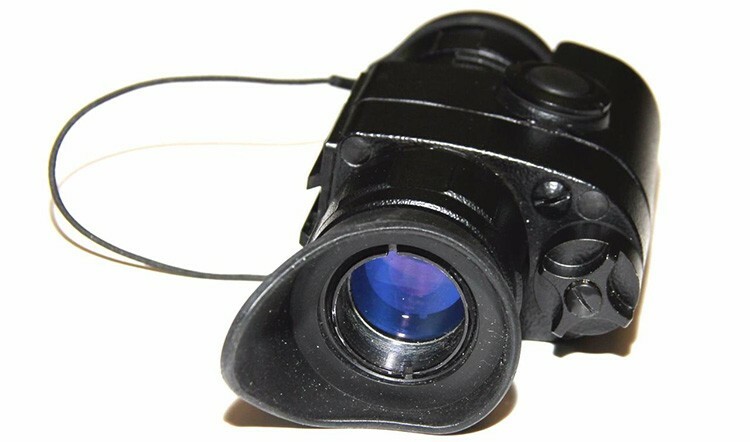
refinery monocular
Among the foreign brands, we will name the following:
Carl zeiss
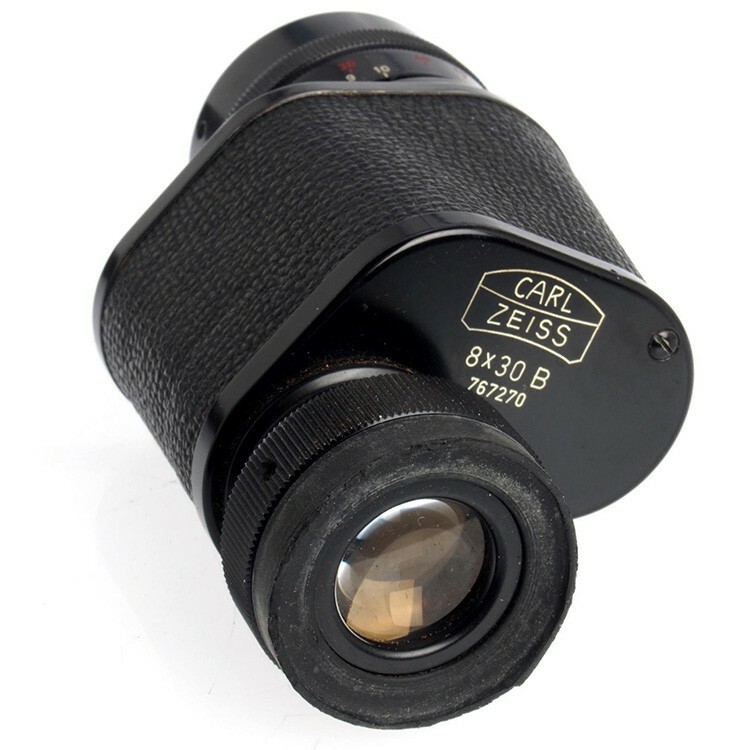
For a decade and a half, Carl Zeiss has been one of the leading manufacturers of optics, and the quality of its products meets all international standards. Carl Zeiss deals with both day and night monoculars for amateurs and professionals. The cost of the products of this company varies from 5,000 to 15,000 rubles.
Carl zeiss
Sturman
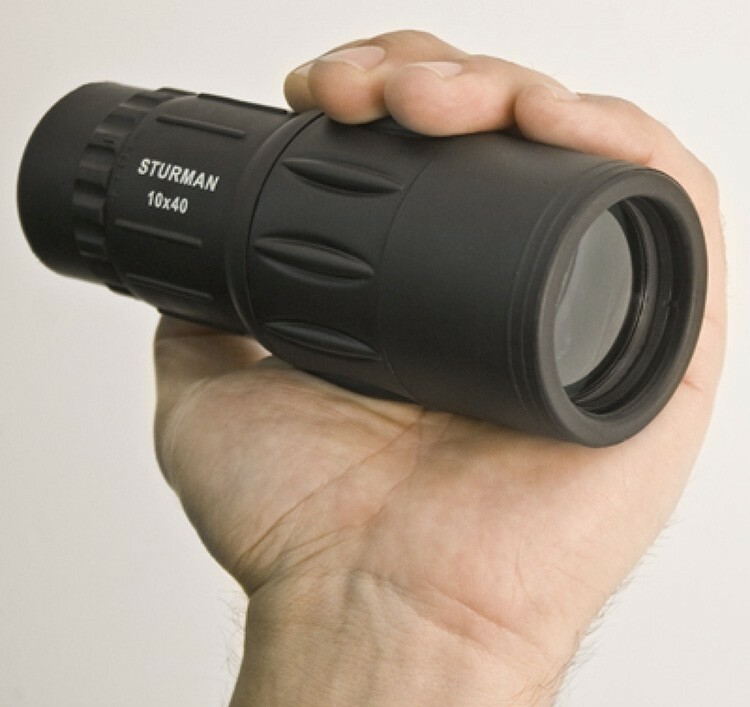
Sturman monoculars are a budget option for those who need an inexpensive monocular to go to the zoo or theater, for example. The cost of such devices does not exceed 1,000 rubles. and everyone can afford it. Moreover, there are inexpensive, but quite successful models with variable multiplicity.
Monocular Navigator
Veber

“Veber” is one of the few companies in Russia that has no “walk-through” models and obvious outsiders in its product range. The company has been working in the optical equipment industry since 1994, and during this time its employees managed to achieve impressive results: the company covered the market most fully, creating two main trademarks - "MICROMED" and "WEBER". MICROMED is one of the leaders in the microscopy market. The devices produced under this brand are used by doctors, forensic scientists, scientists and industrialists.
Monocular Veber Ultra Sport
Bushnell
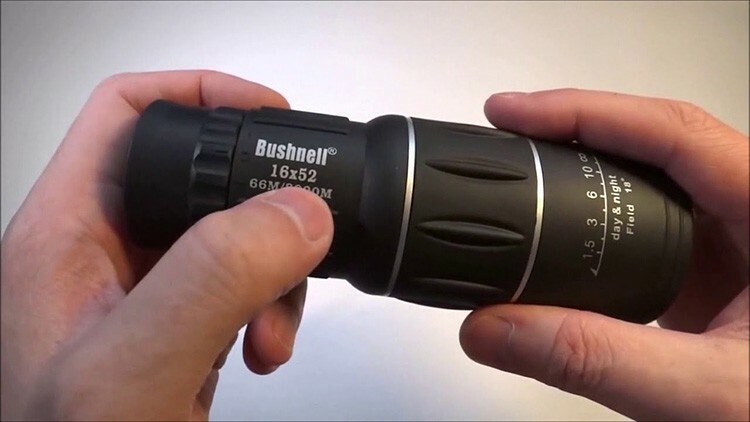
The company is one of the oldest and most renowned firms that has been developing and manufacturing high quality optics for over 60 years. The company's products are in high demand and respect throughout the entire life of the company. The high-precision optics of the company owes such popularity to the constant improvement and implementation of the latest optics technologies. The price of a monocular can range from 500 to 200,000 rubles, depending on the generation of the electron-optical converter used. Consider the most popular models of the most powerful monoculars in different price categories.
Bushnell Monocular
Popular models of the most powerful premium monoculars
The cost of monoculars may depend on the manufacturing company, the magnification factor, as well as the availability of useful functions: automatic brightness control, anti-light, adapters for taking photos or videos, or binocular attachment.
Zeiss Monocular 10 × 25 T - 9,9/10 points, according to the editorial board Tehno.guru. An excellent tool for "amateur" hiking in nature. Small, easy to carry, sufficient field of view, high quality optics. Not afraid of moisture. Excellent replacement for binoculars. It is important that you can observe without taking off your glasses.

Main characteristics:
- Magnification - 10x.
- Objective lens diameter - 25 mm.
- The exit pupil diameter is 2.5 mm.
- The field of view at a distance of 1000 m is 88 cm.
- The minimum focusing distance is 4.5 m.
- The twilight factor is 15.8.
- Diopter adjustment - ± 4D.
- Optics features: multi-layer lens coating.
- Case: chalk, moisture and dust proof.
- Price - 20,000 rubles.
Zeiss Monocular
Veber Monty 18 × 70 - 9,8/10 points, according to the editorial board Tehno.guru. One of the most powerful premium monoculars. An impressive device that has not only an outstanding degree of magnification, but also a considerable weight - 800 g. The kit (which is quite understandable) includes a tripod. Despite being somewhat bulky, the image quality is excellent.
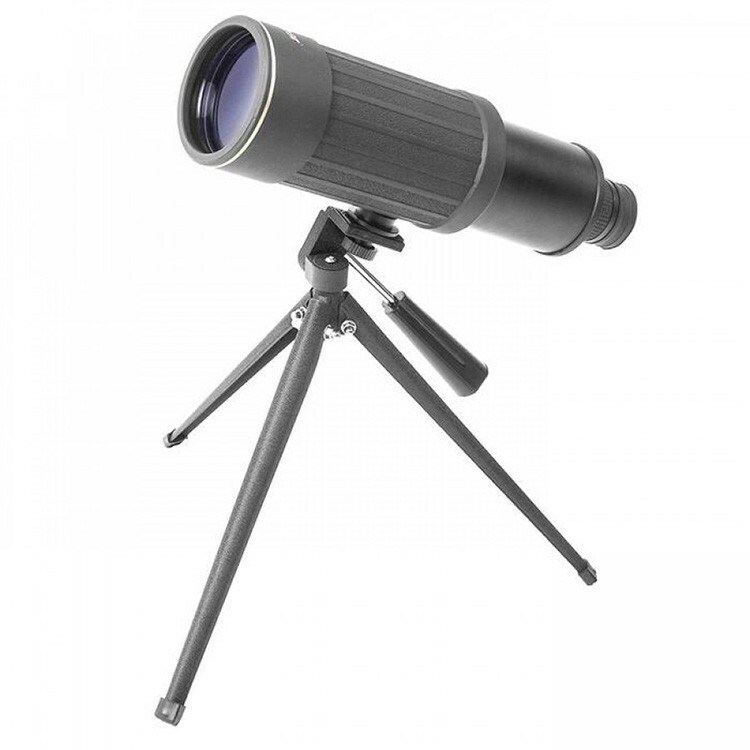
Main characteristics:
- Magnification - 18x.
- Objective lens diameter - 70 mm.
- The exit pupil diameter is 3.9 mm.
- The real angular field of view is 3.6 °.
- Optics features: multi-layer lens coating.
- Design features: tripod mount.
- The price of the model is from 4,500 rubles.
monocular Veber Monty
KOMZ MP 15 × 50 - 9,8/10 points, according to the editorial board Tehno.guru. According to buyers, the model is perfect for walking hunting, for example, for game in the fields. Enlarges well, fits in a bag or pocket.
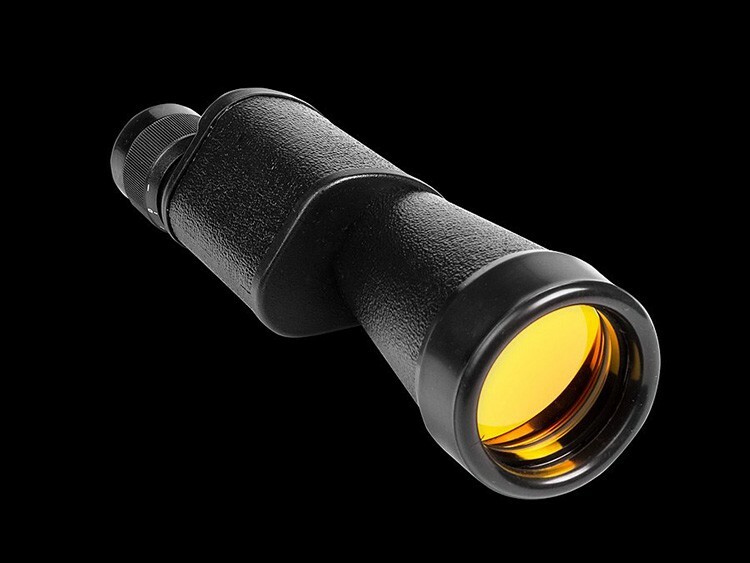
The disadvantages include an inconveniently made eyepiece, which rests on the eyeball instead of resting on the surrounding bone. The design of the device seems simple to many. The minimum price is 3,900 rubles.
monocular KOMZ MP
Popular models of monoculars with high magnification in the middle price category
Veber Sport BR 12 × 32 - 9,5/10 points, according to the editorial board Tehno.guru. A very small and lightweight monocular with good power. Allows you to enjoy good images even in the evening due to sufficient aperture. Comes with a convenient protective case.
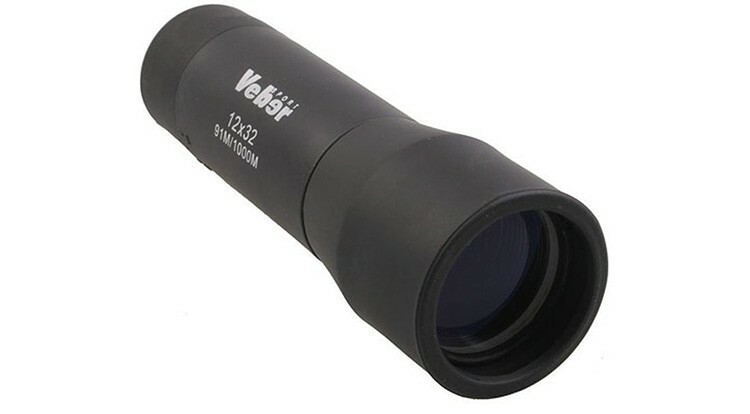
Disadvantages: it will not be possible to see distant landscapes - the focusing does not reach further than 2 kilometers. The monocular is not designed for falls at all - it is plastic and with a fragile lens. The minimum price is 800 rubles.
monocular Veber Sport BR
Sturman 10 × 40 monocular - 9,7/10 points, according to the editorial board Tehno.guru. Very compact (only 17 cm long) yet powerful and easy to use. The body is made of aluminum and is rubberized. By rotating the eyepiece, you can adjust the focus.
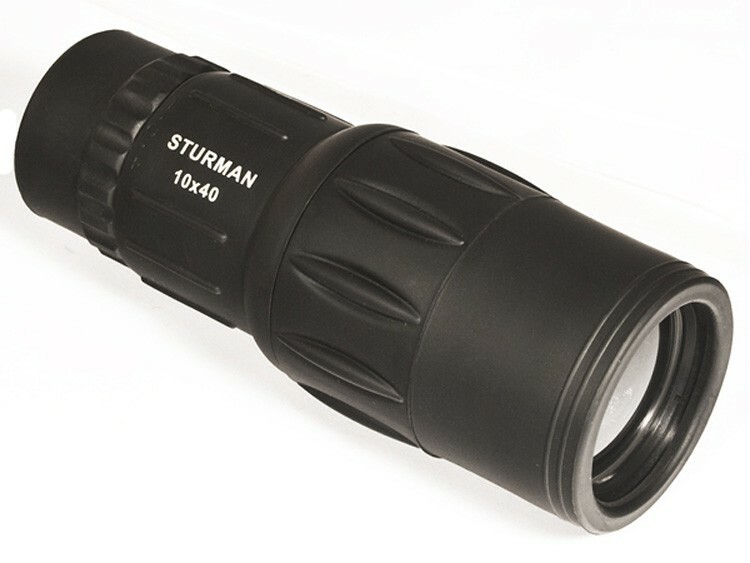
The model differs in that it produces a very clear image of not only static, but also moving objects. The optical design is based on Roof prism technology, which means that the image is projected upright, not upside down. The minimum price is 1 100 rubles.
monocular Navigator
Monocular Bushnell 95 × 52 -9,8/10 points, according to the editorial board Tehno.guru. The few reviews that exist on the network for the Bushnell 95 × 52 model suggest that the device may well become one of the most bought on the optical equipment market. The front lens diameter is 37 mm. The case is rubberized, which, possibly, will save you from falling, as well as from getting moisture inside the device. Not afraid of temperature changes from -40 to + 50 ° C. The minimum focal length stated on the manufacturer's website is 5 meters. Bushnell monocular without magnification, manual focus - 95 × 52.
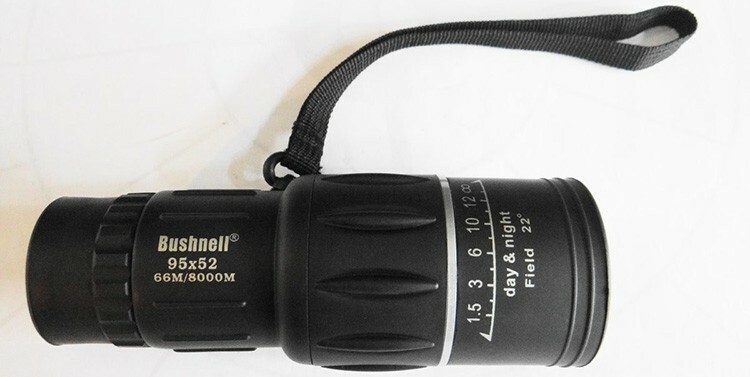
Main characteristics:
- Viewing angle - 22 °.
- Case: metal (rubberized).
- Operating temperature range: -40 to + 50 ° C.
- The field of view at a distance is 66 m / 8000 m.
- Multi-coated optics.
- High-quality, high-contrast image.
- Shockproof and waterproof rubberized body.
- The price of the product is 1,200 rubles.
Bushnell monocular
How to choose a high magnification monocular for hunting and fishing
If you choose a device for hunting, it is better to take a monocular with a lower magnification, but with a wider viewing angle. Since in the forest, the line of sight rarely exceeds a kilometer, and in this case, the device does not need a strong increase. Conversely, if you plan to explore the area at a great distance, for example, on a river, then, on the contrary, you should choose a monocular with a higher magnification.
When choosing advanced models, for example, with a night vision function, consider whether you are ready to sit on patrol at night.
How to choose a monocular for hunting, see this video:
In order not to be mistaken with the choice, you need to look not only not the degree of magnification, but also at each of the other possible parameters. And also some difficulties that may arise:
- Professionals consider the optimal multiplicity of 5-6, because such devices usually stabilize well and do not weigh too much. If the magnification is more than 8, there are already problems with image stabilization. There are also monoculars with adjustable magnification, but this raises the question of the reliability of such a device.
- Objective diameter. The parameter directly affects the degree of the luminosity of the device. The larger the main lens is, the heavier the monocular is.
- line of sight. If you imagine that there is a 1000-meter long fence in front of you, then with the linear vision of the monocular 113 meters out of 1000, you will see a fragment of this fence 113 meters long. The higher the magnification, the lower this figure will be.
- Gas filling. The parameter indicates whether the sealed housing is filled with any inert gas in order to prevent condensation.
- Optical clearing. This is the main criterion if the correct color rendition and image brightness are important to you. The best monoculars are equipped with multilayer coating, while the cheapest monoculars only coat one layer of the lens.
- Depth of field. The parameter determines how much the distance can change before the focus needs to be re-adjusted.
- Removal of the exit pupil. In other words, it is the distance in millimeters between the eyepiece and the eye. It should be comfortable and not degrade the quality of the visible image. A person wearing glasses must pay attention to this criterion. There are two options here - either take off your glasses while using the monocular, or not. In the second case, a model with an offset of more than 14 millimeters is required.
- Water resistance. A useful function for those who need the device for hunting or use near water. If you plan to use the monocular only at home, then the usual splash protection will be enough.
We hope that after reading this article, choosing an optical device will not be difficult for you. If you still have questions for the author of the article, ask them below in the comments.



